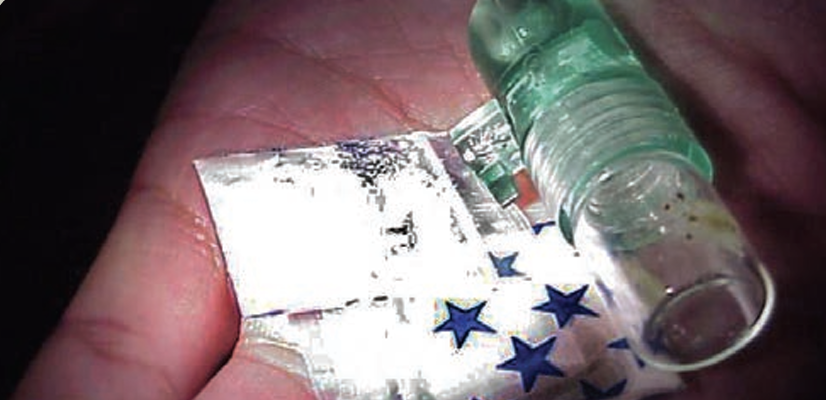The Facts About Ketamine
Ketamine, a quick-acting anesthetic, was developed in the 1960s and used as an anesthetic during the Vietnam War and in healthcare settings. (1) Ketamine hydrochloride, a dissociative drug, is used legally as a general anesthetic in humans and as a tranquilizer in animals. (2) In 1999, ketamine became a Schedule III non-narcotic substance under the Controlled Substances Act. Later, in 2019, the Food and Drug Administration (FDA) approved esketamine – a ketamine derivative – as a nasal spray version for treatment-resistant depression that is only available at a certified doctor’s office or clinic. (3)
Common Street Names: Cat Tranquilizer, Cat Valium, Jet K, Kit Kat, Purple, Special K, Special La Coke, Super Acid, Super K, and Vitamin K.
How is Ketamine Used?
Medical Uses: Historically, ketamine has been a highly effective general anesthetic for procedures that do not require muscle relaxation. For example, it may be used in emergency departments to reduce fractures or treat dislocations. Ketamine is also used “off-label,” which means the drug may be used to treat conditions not yet approved by the FDA, such as the case with ketamine therapy.
DEA Pic: Ketamine in different forms
Ketamine Therapy: In addition to its use as an effective anesthetic, according to the National Institute of Health, ketamine can also be highly beneficial for pain management, treatment-resistant depression (TRD), managing suicidal ideation, and PTSD. (2) With the recent 2019 approval for use to treat TRD, a prescription version of ketamine called esketamine (Spravato), given as a nasal spray, is now available to help those with severe depression that has not responded to other treatments. (4) It works by blocking NMDA receptors in the brain that allows for increased serotonin levels and other neurotransmitters known to improve mood.
Important to note is that drug companies are usually allowed to market and promote their products for uses that are FDA-approved. However, many clinics and telehealth companies that aren’t manufacturing the drug promote its use. Discussing ketamine with your healthcare provider is important to determine whether it would be a suitable treatment based on your health history. (1)
When you’re ready, we’re here for you. Find substance use addiction, treatment, and recovery services here.
Ketamine Misuse
Ketamine, often referred to as “K” or “Special K” has become a recreational drug popular at nightclubs and festivals for its hallucinogenic effects that can mimic PCP and ecstasy. According to the DEA, ketamine can be manufactured commercially as a powder or liquid and is also formed from pharmaceutical ketamine by evaporating the liquid to form crystals, which are then ground into powder.
Powdered ketamine can be snorted or it is smoked, most often in marijuana or tobacco cigarettes, while the liquid form is injected or mixed into drinks. Ketamine is often combined with other substances like meth, MDMA, or cocaine. (3)
2015–2019 U.S. National Survey on Drug Use and Health showed that males were more likely than females to use the drug, with males between the ages of 26-34 at increased risk, compared to other ages. Additionally, the data showed that college-educated men are nearly 2.5 times more likely to use ketamine. (5)
DEA Pic: Ketamine Vials
According to the NIH, a study revealed that ketamine, when combined with other drugs or alcohol, significantly contributes to overdoses and fatalities.
Side Effects of Ketamine
Dissociation
Sedation
High blood pressure
Dizziness
Headache
Confusion
Drowsiness
Blurred or double vision
Anxiety
Amnesia
Nausea and vomiting.
Hallucinations lasting approximately 30-60 minutes. (2,3)
According to the NIH, a study revealed that ketamine, when combined with other drugs or alcohol, significantly contributes to overdoses and fatalities. Ketamine was found to be involved in 79% of overdose cases. It also has been used to facilitate sexual assault. (3)
No antidote for ketamine is currently recognized, so basic supportive care and monitoring the ABCs – airway, breathing, and circulation – are standard. (2)
(1) Smith Rogers, L. (2024, January 26). What to Know About Ketamine | Johns Hopkins | Bloomberg School of Public Health. Publichealth.jhu.edu. https://publichealth.jhu.edu/2024/what-to-know-about-ketamine
(2) Rosenbaum, S. B., & Palacios, J. L. (2019). Ketamine. Nih.gov; StatPearls Publishing. https://www.ncbi.nlm.nih.gov/books/NBK470357/
(3) Drug Enforcement Administration. (2020). Drug fact sheet: Ketamine. https://www.dea.gov/sites/default/files/2020-06/Ketamine-2020.pdf
(4) Grinspoon, P. (2022, August 9). Ketamine for treatment-resistant depression: When and where is it safe? Harvard Health. https://www.health.harvard.edu/blog/ketamine-for-treatment-resistant-depression-when-and-where-is-it-safe-202208092797
(5) Sally, C. (2022, May 21). Special K in the clubs? Controlled substance ketamine makes its way into nightlife scenes, clubs and today’s festival party culture. School of Public Health; University of North Texas Science Center. https://www.unthsc.edu/school-of-public-health/special-k-in-the-clubs-controlled-substance-ketamine-makes-its-way-into-nightlife-scenes-clubs-and-todays-festival-party-culture/



